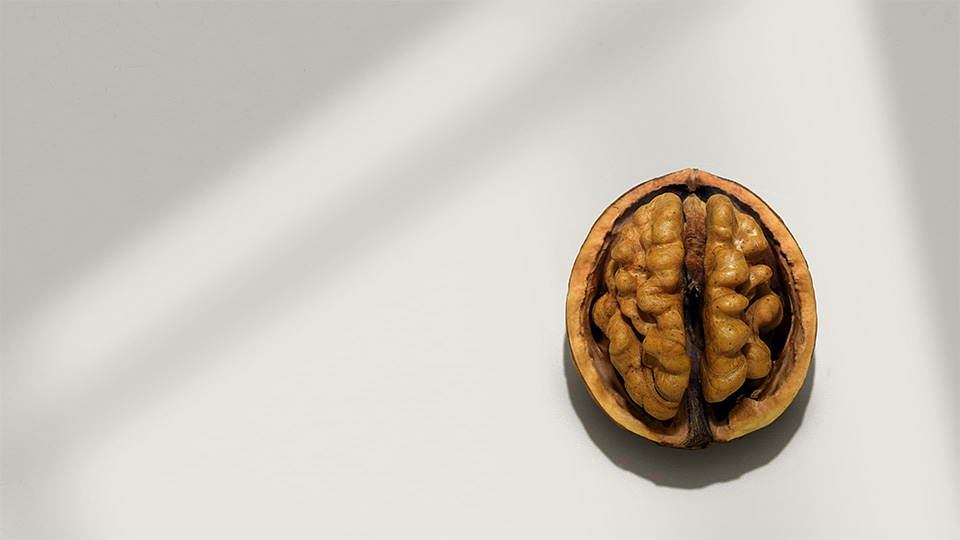Thorne's powerful formulas for the brain

- Formula for the ability to concentrate
- Nootropic with ashwagandha, ginkgo, bacopa, caffeine, pterostilbene and lutein

- Formula for the brain
- Contains Nicotinamide Riboside (415 mg per capsule), Coffe Fruit Extract and Betaine

- Formula for stressful situations
- Contains Greek mountain tea extract, Lions Mane and Panax ginseng
10 Best Supplements for the Brain


















More Formulas for the Brain

- Formula for stressful situations
- Contains patented, standardized herbal extracts of saffron (affron®) and ashwagandha (KSM-66®)

- Formula for the brain
- BacoMind®, patented and scientifically researched Brahmi extract (Bacopa monnieri)

- Formula for the brain
- Contains 200 mg of vitamin B2, other B vitamins, magnesium, botanicals and D3

- Herbal combination for relaxation
- With patented 3:1 saffron extract (Affron®)

- Nootropic with bacopa, lions mane, green tea and ginkgo biloba
- Formula for concentration, learning ability and memory

- Formula for mood
- Contains standardized extracts of St. Johns wort, ginkgo biloba and Siberian ginseng

- 75 mg 5-HTP per capsule
- Natural plant extract in vegan capsules

- Formula for mood
- Contains 100 mg of 5-HTP per capsule

- Formula for the brain
- With active B vitamins, zinc, citicoline, lutein and zeaxanthin

- Formula for mood
- Contains magnesium, 5-HTP, L-theanine and saffron

- Formula for concentration, learning ability and memory
- Contains bacopa, gotu kola and lemon balm
Buy the best supplements for the brain here. Or read more below.
The central nervous system: brain and spinal cord
Anatomy
Together with the spinal cord, the brain forms the central nervous system. The brain weighs about 1.35 kilograms and consists of more than 100 billion nerve cells. Information between brain cells is transmitted through neurotransmitters.
The brain is protected by the skull. Directly under the skull are 3 protective meninges (meninges) with a layer of cerebrospinal fluid between them. Below the membranes are the functional parts of the brain.

Anatomically, the brain consists of the cerebrum (cerebrum), the cerebellum (cerebellum) and the brainstem (truncus cerebri).
The cortex cerebri or cerebral cortex is the outermost layer of the cerebellum. There are deeper lines in the cortex that mark the division between the different lobes. The name of the lobes is determined by the bone that covers them.
The cerebellum is divided into 2 halves, called hemispheres. The two hemispheres are connected by the corpus callosum (cerebellum).
The cerebellum (cerebellum) is located at the back of the head and is domed by the posterior part of the cerebrum. Behind the cerebellum, in the center of the brain is the brainstem. The brain stem is connected to the spinal cord and is in contact with the rest of the body.
The spinal cord is located in the spine and is an extension of the brain. The brain stem regulates basic vital functions such as heart rate, breathing, blood pressure and body temperature, among others.
The midbrain lies between the brainstem and the cerebrum and consists of the thalamus, hypothalamus and pituitary gland. One of the tasks of the thalamus is the degree of concentration on a particular task. In doing so, it prioritizes certain signals and other signals the thalamus lets through delayed or not. In particular, the hypothalamus has a coordinating function and also regulates homeostasis.The pituitary gland is a gland that secretes various hormones.
The cognitive and emotional brain
In addition, you can divide the brain into the cognitive and emotional brain. The emotional brain, also known as the limbic system is a series of structures in the center of the brain that are involved in memory, motivation and the creation and expression of emotions.
Because the emotional brain is closely connected to the body, it is often easier to act on it through the body than through language.
The limbic system roughly consists of part of the thalamus, hypothalamus, amygdala and hippocampus. The hippocampus is involved in the storage and formation of memories as well as spatial understanding. High cortisol levels can have a negative effect on the volume of the hippocampus, by Brain-Derived Neurotrophic Factor (BDNF) can reverse this. In addition, stress affects the formation of BDNF in the nerve cells of amygdala and prefrontal cortex. The amygdala, also called almond nucleus, makes emotional connections in particular.
The cognitive brain, the neocortex, is evolutionarily the new part of the brain. This area of the brain gives humans an exceptionally high capacity to process information. One part of it in particular, the prefrontal cortex, located behind the forehead above the eyes, is particularly well developed.
The neocortex consists of a left and right hemisphere of the brain, each with its specific tasks. The right hemisphere is more the creative innovative thinking and the left hemisphere is considered analytical and logical thinking.
Blood-brain barrier
In our brain there is a boundary layer that ensures that only nutrients can pass through. Unwanted substances are stopped here and this protects the brain from dangerous substances. We call this the blood-brain barrier, also called BBB (Blood Brain Barrier) for short. This allows oxygen, water, glucose and other nutrients to pass through very selectively.
Written by: Liesbeth Thoen
Reviewed and edited by: Peter Smeets
Updated on: March 3, 2022
